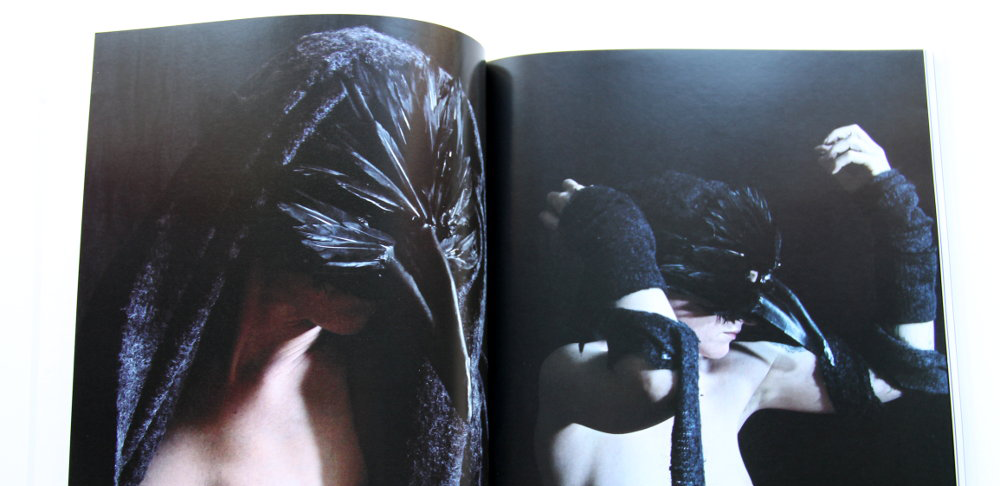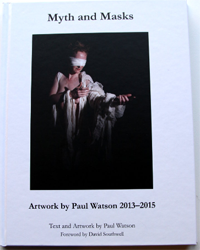It is a great pleasure to welcome Paul Watson back to the #FolkloreThursday website this month with an in-depth look at his evocative new book Myth and Masks. The book takes the reader on a journey through the last two years of his work, touching on subjects as eclectic as the English eerie, folk-horror and psychogeography, with every stop in between. In addition to the beautiful colour plates of Paul’s work, the book includes several essays focusing on the inspiration behind his work along with ideas of myth and folklore, creating together an engrossing volume that will lead you to another world.

#FT: How long have you identified as an artist and what are your earliest memories of creating art?
PW: I first started to think seriously about becoming an artist when I was about 15/16; I’d decided to choose art as one of my O-Levels (the predecessors to GCSEs) at school. I went on to do art at A-Level, then a Foundation Course in Art & Design, and finally a degree in art. It was at some point during that chain of education that I started thinking of myself as an artist, but it’s hard to pinpoint exactly when.
Like most people, I have created art from early childhood onwards – I certainly remember drawing the typical stick figures and square houses that all 4-year-olds draw. And witches, of course, I always liked drawing witches after being read fairy tales!
#FT: When did you first begin to incorporate ideas from folklore and myth into your work and how did that come about?
PW: It was in 2008, prior to that there was no explicit folklore/myth in my work. In 2008 I decided to take a short course in letterpress printing, and after finishing the course I had an idea for a project called the Book of the Erinyes, which would be a mixture of letterpress-printed text, photographs, and linoprints, all hand-bound into a very limited edition of about 30 books.
The ancient Greek Erinyes, probably better known by their Romanised name of the Furies, were one of the many groups of three women that you find in mythology, this time dedicated to pursuing and punishing those who swore false oaths or broke various other ethical rules. They were chthonic deities of vengeance, far more ancient than the Olympians, and the idea of a much older, darker set of myths buried beneath the more common ones we know appealed to me. I never actually finished the project (one day I might return to it!), but from that point onwards folklore and myth—especially the older, more primal echoes—became a major theme in my work.
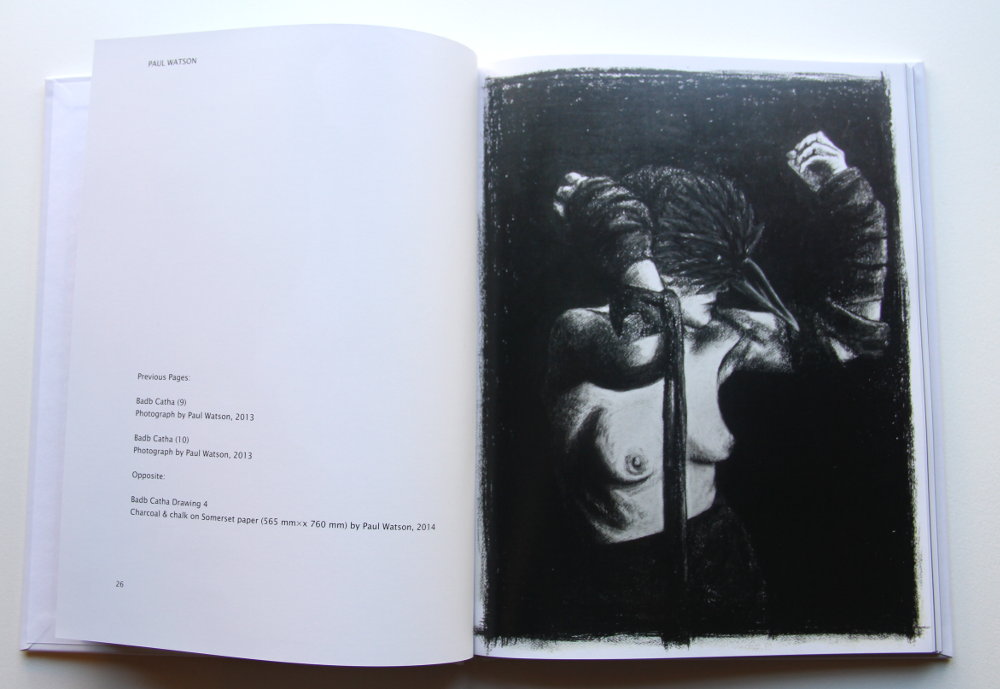
#FT: Which piece would you say was most directly influenced by folklore, and is there a figure or story that has inspired you the most?
PW: The most directly influenced pieces were a series of photographs, drawings, and prints of the Irish myth character of Badb Catha. Badb Catha was a war goddess who often took the form of a crow, and formed part of another trio of goddesses called the Morrígna.
After I’d moved on from ancient Greek myth (the Book of the Erinyes, and a short series on Medea) I wanted to look at the myth and folklore of Britain. Unfortunately so much of the really old stuff has been lost due to the lack of written records as well as being deliberately eradicated by religious zealots.
Being Irish, Badb Catha obviously wasn’t part of the myth and folklore of Britain, and I didn’t want to appropriate an Irish myth, but while I was researching I discovered that there were apparently similar goddesses (Cathubodua, Bodua, etc.) in areas of eastern France back in Roman times. I decided that it wasn’t too much of a leap of faith to presume that a more primal “proto-Badb” existed throughout the Iron Age communities of France, Britain, and Ireland, so while I kept the name Badb Catha, it was the proto-Badb figure I was trying to explore.
I don’t know if there’s a figure or story that has inspired me the most – I try to look behind the story/character for an older version that preceded it, and so I often end up combining different tales or characters that I think may have the same original root in the mists of time. I don’t claim to use any scientific analysis to do this – I just go with whatever inspires or interests me the most. A lot of this probably comes from reading the late Robert Holdstock’s Mythago Wood books far too many times over the years!
#FT: What preparation do you make before starting a new piece?
PW: If I’m working with photography then there’s a lot of work involved before the camera appears: typically I’ll start by creating a mask, which is usually a couple of week’s work in itself as I change things multiple times during the process. Any remaining parts of the costume usually come together pretty quickly once the mask is done.
The idea of using masks is that I like to introduce some deliberate ambiguity as to whether the figure being portrayed is a mythological/supernatural figure themselves or whether they are assuming the role of a mythic character as part of some sort of ritual activity. To add another layer of ambiguity to this, in many cultures when a mask is worn in a ritual it is believed to transform the wearer into the deity or spirit represented by the mask, and so by wearing a mask the wearer becomes the mythic character they are “pretending” to be, so pretence becomes reality. This is something I discuss in more detail in my book!

#FT: How do you choose your models, and how much knowledge of the topic do you give them before they start?
PW: I only have a small number of models at the moment, so it’s a matter of whoever is available. I don’t have any specific criteria for selecting them – it’s simply a matter of whoever contacts me to say they’re interested in modelling. One is an old friend of mine who works as a professional life model, others are friends or students who just want to make a bit of extra cash.
They all have a chance to go through my artwork on my website (or in my book now, I suppose!) to see what they’re letting themselves in for, and I always explain the idea for the piece of artwork, and share any preliminary sketches, before arranging anything.
The more interested they are in the ideas behind the artwork the better – a mutual interest in what’s being created brings a sense of two people working together creatively to realise an idea, as opposed to me simply directing another person to stand a certain way.
So if there’s anyone reading this in the Brighton area of England who wants to become a dark, mythic/folkloric figure then do get in touch with me!
#FT: Do you have a favourite piece from the book? If yes, which is it, and why?
PW: I’ve been thinking about this and I think it must be the “Blindfolded Seeress” character, primarily because I decided to put that on the cover – the shadows worked really nicely on that series of photographs (thanks to a new studio flash that really let me control the lighting).
That said, I very much like the Badb Catha series as well. It’s difficult to look back on my artwork because the one piece I always like the most is that one I’m currently working on as it has the most potential – everything preceding it is finished, and so the excitement of discovering what it’s going to become is over.
#FT: Which piece of work in the collection caused you the most trouble and how?
PW: The Badb Catha mask was a bit of a pain when we were doing the photoshoot – it was very front-heavy, and so kept slipping down the model’s face. We solved it in the end by tying a large weight to the back of the mask, which was hidden in all of the photographs!
The “Moss Figure” photograph probably took the longest to set up for: first I had to get all the moss, and for that I turned to eBay – my studio contains many things sourced via eBay including a 5kg bag of dried moss, 5 resin crow skulls, a bag of fake ivy, a bag of fake oak leaves in various autumnal shades, and a wicked-looking sickle. Then I had to find some glue that would safely stick the moss to the model’s skin, but would also be easily removable and wouldn’t irritate human skin. Obviously I had to test that on myself first as I have a duty of care to the model – thankfully it worked as advertised. I bought the chair from a second-hand shop a mile-or-so from my house and, because I don’t drive, I had to carry it all the way back. The day before the photoshoot I went out to a nearby park and collected a bin-bag full of fallen leaves to carpet the floor with. And all that was before the model arrived and had to cover herself with green body paint.
#FT: How does inspiration strike? Is there a particular occasion that sticks with you?
PW: It certainly never strikes when I sit myself down with a blank piece of paper, determined to think of a new piece of work. For a large drawing I did recently called The Procession (which isn’t in the book – it was done after the book was published) the idea came to me just as I was drifting off to sleep, and I had to make a mental note of it, then scribble it down the next morning when I woke up.
I don’t usually get inspiration for an entire finished piece of work in one go – I’ll have an idea for a mask, or a section of a mask, or a vague concept for a character, and that small part of an idea has the equivalent of a gravitational force that draws other fragments of ideas towards it until they all coalesce into a whole.
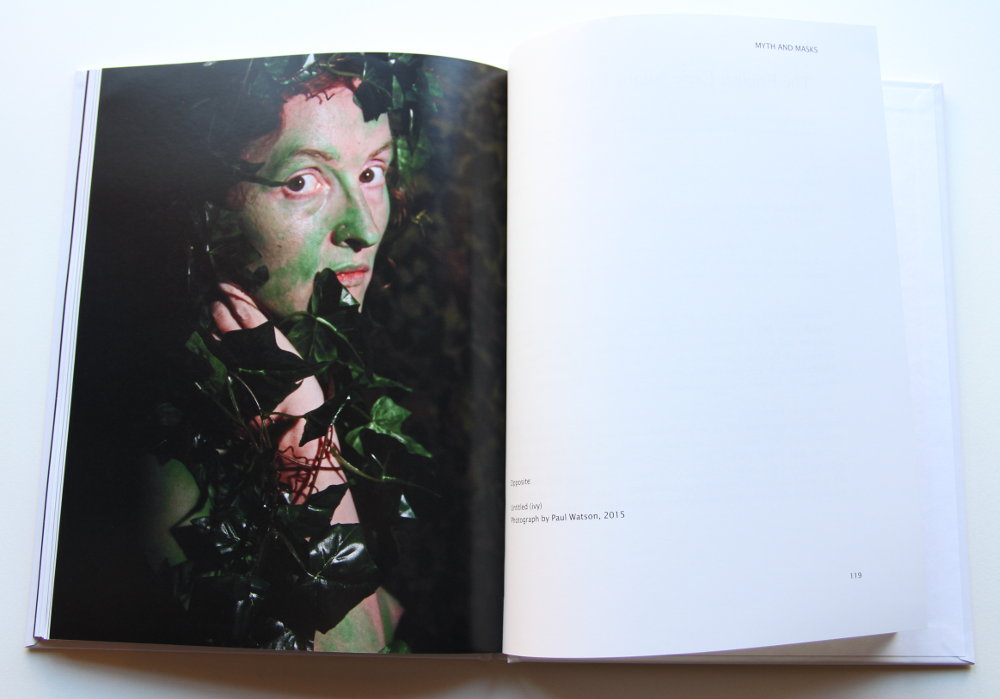
#FT: How does it feel to have the finished book in your hands?
PW: Marvellous, but still slightly unreal. It took a lot of work and several steep learning curves to take it from an idea to a finished, self-published, sewn, hardback book (and that’s despite the fact that I used to work in a publishing company for ten years).
#FT: What has stayed with you most through the process of creating the artwork contained in Myth and Masks?
PW: The artwork in the book was created over three years (2013–2015), and during that time I’ve learnt a lot about mask-making, photography, lighting, drawing, and printmaking. This is not unexpected, as any artist is continually learning and experimenting throughout their lifetime.
What has stayed with me the most is probably a deep interest in all the things I researched and devoured while creating the work – much of which is mentioned in the articles in the book: all the aspects of myth, masks, folklore and folk-horror, the “English eerie”, the weird, fairy tales, witches…
#FT: What would you like readers to take from the book and the artwork within?
PW: Obviously an enjoyment of the artwork and also an interest in the articles in the book, but I’d also like to encourage people to buy artwork. Many people like reading and so own lots of books; many people like film and own lots of DVDs; many people like music and own lots of CDs, vinyl, or MP3s. Yet many of those people would say they like visual art as well, but they don’t own any original artwork. There’s some sort of fear or reluctance—particularly in the UK, I think—about buying original artwork, and I’m still not sure why. Maybe it’s all the spin about buying art as an investment, which makes it sound like a complicated financial decision that you need a lot of expertise in (it’s not – just buy what you like), or maybe it’s all the news items about artwork being sold for millions of pounds at auctions (when actually you can pick up a lot of original artwork for the same price as a fancy DVD box set).
Anyway, that’s one of the reasons I decided to give a free linoprint away with every copy of the book – to get people started on owning their own collection of original artwork.
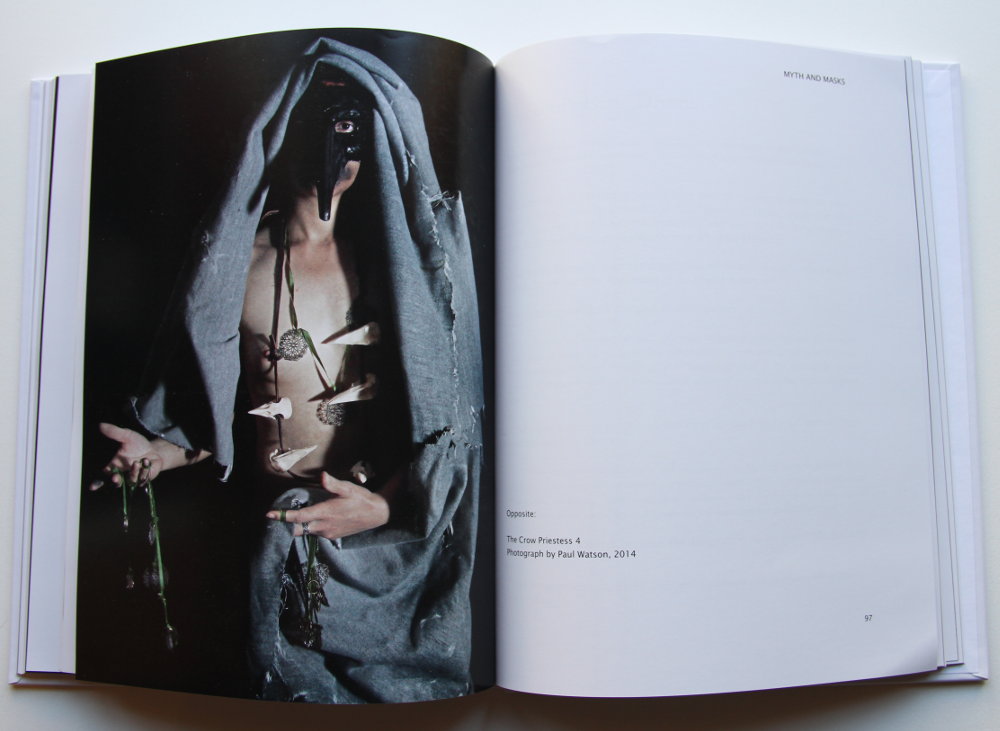
#FT: What are you working on currently and where do you see your artwork taking you in the near future?
PW: I’ve recently done a test shot for a new series of photographs called “Come Unto The Corn”, which features a rather dark, masked figure wielding a sickle from some long-forgotten harvest ritual, and I’ve just done the first in what I hope will be a small series of large-scale charcoal drawings. In a couple of weeks I’ll be doing a short course in Zinc Plate Lithography to remind myself of the technique, so you can also expect a lot more printmaking in 2016. I feel like I’m on a roll with my artwork at the moment, which is very exciting and very productive!
Thank you Paul for such fascinating answers and for all your support to #FolkloreThursday; we wish you all the best for 2016 and beyond!
Paul Watson’s book Myth and Masks is exclusively available (along with a free, hand-printed linoprint) from his website at http://www.lazaruscorporation.
Recommended books from #FolkloreThursday

